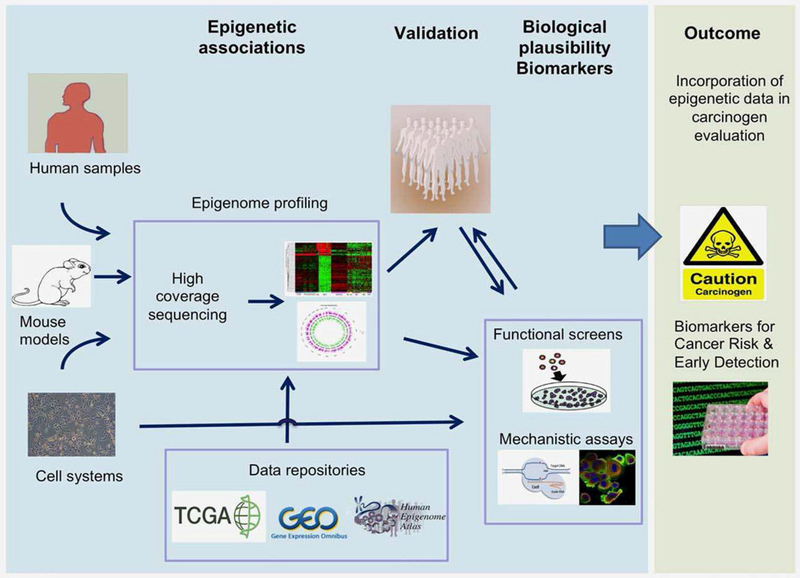Figure 2.

An integrated approach for the production and integration of epigenetic data in carcinogen identification and evaluation. This approach implies the use of cutting edge epigenomics, population-based cohorts, and innovative bioinformatics tools for the identification, quantification, mapping of changes in the epigenome induced by known and suspected carcinogens. Human tumor samples from case– control and population-based cohorts are used in combination with in vitro cell systems and mouse models to perform epigenomic profiling to identify signatures, genes and pathways that are deregulated by specific risk exposure. This is followed by validation in population-based cohorts and where appropriate the data are crossed with the epigenomic databases. Identification of genes and pathways is followed by functional studies to provide biological plausibility to associations that are observed. The outcome is providing evidence base for studies directly relevant to cancer causation and prevention and identification of markers for early detection and cancer risk stratification.
